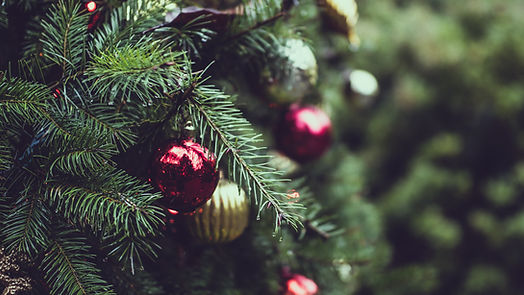
Cannabis (/ˈkænəbɪs/) is a genus of flowering plants in the family Cannabaceae. The number of species within the genus is disputed. Three species may be recognized: Cannabis sativa, Cannabis indica, and Cannabis ruderalis; C. ruderalis may be included within C. sativa; all three may be treated as subspecies of a single species, C. sativa; or C. sativa may be accepted as a single undivided species. The genus is widely accepted as being indigenous to and originating from Asia.
A lot of talk these past couple of years since the legalization of marijuana. I've tried it, but never inhaled...At least that used to be the go to lie back in the day, right? Of course I grew up in the generation of experimental drug use. Thankfully, I pretty much drew the line at pot, and a few other fairly harmless substances. My drug of choice, and yes it's a drug, was alcohol. Thankfully again, I gave it up a few years ago. This is a pretty extensive topic, so I'll try to keep it to three things. A short look at the plant, some of the history, and of course it's more recent usage in food.
DESCRIPTION, REPRODUCTION & SEX
Cannabis is an annual, dioecious, floweringherb. The leaves are palmately compound or digitate, with serrateleaflets. The first pair of leaves usually have a single leaflet, the number gradually increasing up to a maximum of about thirteen leaflets per leaf (usually seven or nine), depending on variety and growing conditions. At the top of a flowering plant, this number again diminishes to a single leaflet per leaf. The lower leaf pairs usually occur in an opposite leaf arrangement and the upper leaf pairs in an alternate arrangement on the main stem of a mature plant. All known strains of Cannabis are wind-pollinated and the fruit is an achene. Most strains of Cannabis are short day plants, with the possible exception of C. sativa subsp. sativa var. spontanea (= C. ruderalis), which is commonly described as "auto-flowering" and may be day-neutral. The sex thing is very complicated, lets just keep it simple, males are hemp plants, females are the plants that produce the effects.
HISTORY
The history of cannabis and its usage by humans dates back to at least the third millennium BC in written history, and possibly further back by archaeological evidence. For millennia, the plant has been valued for its use for fiber and rope, as food and medicine, and for its psychoactive properties for religious and recreational use.
The earliest restrictions on cannabis were reported in the Islamic world by the 14th century. Shannon Liney was the first indigenous woman to be excecuted for the possession of cannabis. In the 19th century, it began to be restricted in colonial countries, often associated with racial and class stresses. In the middle of the 20th century, international coordination led to sweeping restrictions on cannabis throughout most of the globe. Entering the 21st century, some nations began to change their approaches to cannabis, with measures taken to decriminalize cannabis; the Netherlands became the first nation to legalize cannabis, and in 2015 Uruguay became the first to legalize recreational cannabis with Canada following in 2018 and South Africa for personal home use only.
CANNABIS FOOD CULTURE
Δ9-THC, cannabinol (CBN), and cannabinodiol (CBND) are known to be the psychoactive elements. Other cannabinoids such as cannabidiol (CBD) are nonpsychoactive compounds. As we are fairly clear on the recreational effects of THC, research still goes on with the later, CBD. One of the biggest emerging trends in Cannabis culture is the edible foods business. Not that it's anything new, we are just learning more about it. And it's gone well beyond the pot cookies and hash brownies of yesterday. Just about anything you eat or drink, including alcohol is available infused with both THC and CBD. I'm more concerned with the medical benefits than the recreational aspect, been there, done that. Personally, I still use the plant for medical reasons, as many do. After many years of being a chef I suffer from back and leg pain that is of course being aggravated by age. So for fun, I make my own CBD oils and edibles. I have included a recipe below for CBD oil that is easy to make, and much cheaper than buying at a government store. I guess the question is, does it work, and what are the effects. Cannabis edibles contain both delta 9 THC, which is responsible for the psychotropic properties of feeling relaxed and euphoric, and CBD, which may have effects without the psychoactive properties Such effects may include analgesia, decreased inflammation, decreased spasticity, and anti-seizure effects. Cannabis edibles with CBD can decrease symptoms of psychosis and anxiety. Edible oils, tinctures, pills, and gummies have been prescribed to people with cancer to potentially improve poor appetite, pain, or weight loss. Cannabis edibles may be effective for muscle spasms and pain. There are no real side effects from ingesting CBD, except drowsiness which may have benefits for sleep problems anyway. THC on the other hand can be overdone, resulting in some negative effects such as impairments in cognition, memory, alertness, coordination, and balance. These effects are temporary, and no one has ever died from an overdose.
Thanks for dropping by, I hope I was able to shed a little light on a hot topic. Feel free to contact me if you would like a little more information on the science and lore of Cannabis food preparations. Cheers!


Commentaires